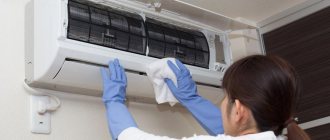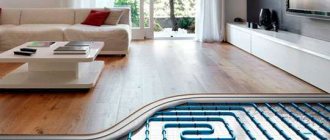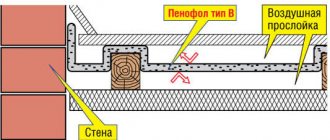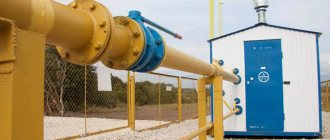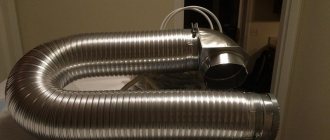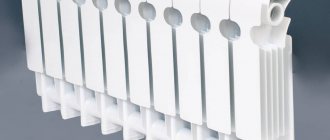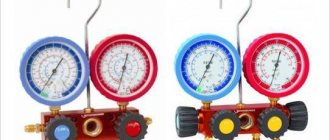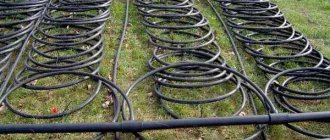Is it possible to use air conditioning in an apartment in winter?
To work at high negative temperatures “for cooling”, you can install the so-called “winter kit”. Its task is to heat the drainage and compressor crankcase; adjust the condensation temperature. Some (more expensive) air conditioners already have all the options to operate at sub-zero temperatures. This is relevant for rooms in which there is constant, year-round heat generation (server rooms, stations, etc.)
Is it possible to turn on the air conditioner for heating in winter?
Based on the above, the split system can be turned on “for heat” above 0 degrees Celsius (unless a different value is set by the manufacturer or an additional kit is installed). This limitation is provided to prevent icing of the fan and condenser of the outdoor unit. In addition, with a further decrease in temperature, the efficiency of the air conditioner (efficiency) decreases significantly.
Operating principle of household climate control equipment
The operating modes of the air conditioner, which are responsible for heating and cooling the room, operate thanks to the refrigerant, which serves as a conductor between street and home heat. In other words, household split systems themselves cannot reproduce it, but as pumps they only pump warm air into the room from the street and vice versa. Heat transfer occurs through special types of freons, and air exchange between them and the environment is carried out by air heat exchangers.
In this case, the heat performance depends both on the design of the heat exchanger, which is different for certain models of air conditioners, and on the initial temperature of the air that is passed through it.
The compressor, located in the outer casing of the device, is responsible for distributing the refrigerant throughout the device. The oil helps him with this, as it begins to thicken in the cold. As a result, the compressor mechanism operates without lubrication, and its spare parts wear out ahead of time.
Operating principle of the air conditioner
There are certain rules for operating an air conditioner in winter, failure to comply with which will lead to its breakdown, and this is often caused by water hammer. When the heating mode is turned on, the freon is heated and evaporates, however, due to excessively low temperature indicators, it does not have time to do this and the liquefied one penetrates the compressor valves.
Ambient temperature and humidity are interconnected - when one indicator changes, the other automatically changes. As a result, the volume of condensate released by the split system increases. It is removed from the device through a special drainage pipe, which, when the temperature drops greatly, becomes covered with ice inside. The condensation has nowhere to drain and it either begins to ooze out from the internal housing, or completely renders the air conditioner unusable.
It is permissible to use a household climate control device in winter, when the operating instructions for the air conditioner allow it, but in the meantime, observing all the precautions specified in it.
Installation features
You may ask if air conditioning is installed in winter. This is real, but there are some peculiarities. The installation of the split system itself, drilling the walls, installing the indoor and outdoor units and connecting them with pipes - all this is no different from installation in the summer.
Problems arise at the stage of vacuuming the device and refueling it at an air temperature below -5° C. Connecting to power and using many split systems in cold weather leads to their breakdown.
Elimination of air masses
Removing air masses from the split system involves vacuuming. This is done using a vacuum pump. If this procedure is carried out at temperatures below 0° C, moisture will form and accumulate in the air conditioner. When the air conditioner is turned on, the refrigerant and lubricating oil substances will interact with moisture. As a result, acidic substances are formed. Under their influence, the spare parts of the unit will quickly become unusable.
Refueling the device
The operating manual for the equipment states that it is not recommended to start it up at temperatures below -5° C. Experts do not recommend starting the device at a temperature of +5° C. This is due to the fact that lubricant is added to the refrigerant to lubricate the moving parts . In cold weather, the lubricant thickens and loses its properties. Parts wear out faster and climate control equipment breaks down.
If you decide to install the unit in the winter, then it would be more correct to install an air conditioner and leave the filling and vacuumization until the spring.
Choosing a split system with heating function
When choosing a heated air conditioner, you must consider the following parameters:
- power consumption of electricity;
- thermal energy productivity;
- energy efficiency category;
- range of permissible operating temperatures;
- automatic defrosting mode of the condenser in the outdoor module.
There are also several other aspects that should be kept in mind when operating an inexpensive air conditioner in heating mode: the purpose of the room (residential, industrial); room dimensions. For example, if this is a production workshop in which there are a large number of workers, then much less energy consumption will be spent on heating. Consequently, the efficiency will be close to the best value.
If you need to choose a split without built-in heating, then it is better to choose inverter air conditioners with winter components, since they are designed to operate in an extended range of sub-zero temperatures.
Heating with a split system during cold periods
First, let's say a few words about the principles of operation of a split system. When the device operates in heating or cooling mode, electrical energy is used to transport heat between the street and the room. In summer it is removed into the atmosphere, and in winter, on the contrary, it is pumped from the street to the room.
Air conditioning heating
Is it possible to turn on the air conditioner at sub-zero temperatures for heating? Yes, you can. But you need to take into account several factors and features of a particular device. During operation in heating mode, freon in liquid form enters the outdoor unit, where it evaporates, taking away some of the heat. The compressor then pumps the gaseous refrigerant into the indoor unit, where it condenses in the evaporator, releasing the accumulated heat. This is how the air conditioner works for heating in winter.
During this process, the heat exchanger in the outdoor unit is cooled to a very low level, as a result of which moisture from the outside air pumped by the fan freezes on it. This is one of the main problems when operating an air conditioner for heating in winter.
The second problem is the increased viscosity of the oil in the compressor. Since it uses a moving mechanism, it needs lubrication. To do this, the compressor is filled with oil at the factory, which can thicken in the cold. When starting a compressor with too thick oil, it may break.
Freezing of the outdoor unit
In order to avoid negative aspects, before turning on the air conditioner for heating in winter in sub-zero weather, the following steps must be taken:
- In the instructions for the split system, find a clause about the maximum permissible temperatures. If it is lower on the street, then the device cannot be turned on.
- Make sure that the thermometer readings outside are above the minimum acceptable level.
- On the air conditioner remote control, find the button responsible for the heating mode and press it. Typically, a pictogram in the form of a stylized sun is used for designation.
- Select the desired temperature. There is no need to try to heat the room too much. The unit may not have sufficient power. It is recommended to heat the room in winter to 18–24 degrees.
We recommend that you read: Air conditioning for server rooms
After completing all the above steps, the heating mode is turned on. Please note that after the split system has been turned on, heating will begin after some time. For several minutes, and sometimes more than 10, the device will be prepared for operation without turning on the indoor unit. Don't be afraid, the air conditioner is not broken, you just need to wait.
Turning on the heating
Minimum temperature
At what temperature can the air conditioner be turned on for heating? – there is no clear answer to this question. It all depends on the model and manufacturer. Some models can operate for heating at -10, and some only at +5.
Inverter air conditioners have a lower minimum operating temperature. than non-inverter ones. Below is a table of minimum temperatures for the most popular air conditioner models (we replaced the model power with the ** symbol):
| Air conditioner model | Minimum temperature for heating operation |
| Cooper&Hunter CH-S**FTXLA | -25 |
| Toshiba RAS-**U2KH3S-EE / RAS-**U2AH3S-EE | -5 / -10 |
| Mitsubishi Electric MUZ-FH**VE | -15 / -16 |
| Panasonis CS-HE**QKD/CU-HE**QKD | -15 / -16 |
| Midea MSR-**ARDN1 | |
| DAIKIN FTXB20/RXB20 | -15 |
Important information about temperature limits
For the cold season there are important restrictions. You cannot turn on the heating when the outside temperature is below 0 C°, otherwise the following problems will begin:
- the condensate on the external heat exchanger begins to freeze, so the outdoor unit begins to become covered with ice;
- as a result, heat transfer deteriorates;
- heating performance decreases.
At what temperature exactly can you turn on the air conditioner for cooling? It is important to ensure that it does not fall below +5 C°. If it is violated, the following may happen:
- the performance of climate control equipment will decrease;
- freezing will occur in the structure of the street block and drainage pipe;
- The compressor may break down during startup.
Air conditioner operating diagram
Heating efficiency
The split system may not always be able to operate at full capacity in cold weather. For example, the specification states that it can operate down to -20. This does not mean that the air conditioner will warm the air to +24.
As a rule, at a minimum temperature the air warms up no higher than +16...+18 °C. The colder it is outside, the worse the air conditioner works.
Each air conditioner has a COP (Coefficient of performance). This is analogous to efficiency. The higher it is, the more economically the equipment operates. For example, at COP 3, for every 1 kW of electricity you will receive 3 kW of heat.
The greater the difference in temperature outside and in the apartment, the lower the COP and the worse the air conditioner works for heating.
Installation nuances
There are several nuances to such work. At low temperatures, freon may leak and microcracks will appear in the refrigeration circuit tubes. This will cause rapid breakdown of the device.
It is important that air conditioning is installed by professionals in sub-zero temperatures. They will take into account all the details and check the system for leaks. Most models can withstand temperatures down to minus 5˚. But it is better to carry out all work when the frost is not lower than 1-2˚, and for a test run the temperature should be higher than plus 1°.
The installation of air conditioners itself has no temperature restrictions - only craftsmen will feel uncomfortable working outside in the cold. There are no problems with installing an external unit, drilling walls, laying communications and installing internal parts of the system. The complexity of these works is the same as in the warm season.
Problems may arise if the route - the distance between the indoor and outdoor units - is more than 15 m. In this case, soldering work will be required, for which there are temperature restrictions.
Checking the tightness of the system
When the installation of the air conditioner outside and in the house is completed, you need to prepare the system for start-up. First, it is important to check the tightness of the circuit. There should be no leaks, otherwise the air conditioner will quickly fail. Crimping is necessary to check the quality of pipe connections, soldering, and the tightness of valves.
This test is carried out using liquid nitrogen. It is important that the temperature in the cylinder is the same as outside. If you put warm gas through pipes, it will cool down sharply outside. This will cause a drop in pressure, which may be considered a leak.
Specialists use special equipment and heating. The check must be thorough, since microcracks often form in the cold. And if a freon leak occurs, the device will fail.
Vacuuming
A mandatory step in installing and testing the system is evacuation. This is squeezing air out of the refrigeration circuit using a special pump. During the vacuum process, moisture and acids are also removed. This must be done before the test run, since refrigerant will circulate through the pipes.
Important! At subzero temperatures, it will not be possible to completely remove moisture from the refrigeration circuit. Because of this, the split system will fail faster.
If air remains in the circuit, the temperature and pressure will increase during operation. Overheating and reduced performance will occur. If moisture remains, it will freeze, ice crystals will clog the tubes, leading to valve failure and overheating. When mixed with refrigerant, water forms acids that have a destructive effect on all parts of the system. In the future, this may cause the air conditioner to break down.
Exploitation
The main thing is to clean the split system before the cold season. Particular attention should be paid to the outdoor unit - because it is affected by frost and cold. If you wish, you can do it yourself. Read more in the article “How to clean an air conditioner yourself.”
There is no big difference between operating an air conditioner in winter and summer. You just need to turn it on and monitor the condition of the outdoor unit. It freezes up over time, causing the air conditioner's performance to deteriorate.
Air conditioning cooling in winter
Some rooms require constant cooling because they contain expensive equipment. As already mentioned, most often these are server rooms that have high heat transfer. When temperatures rise in summer, equipment can fail and disrupt the operation of the entire enterprise.
Similar equipment are magnetic resonance imaging scanners in hospitals. These devices cost several hundred thousand dollars and are very expensive to install and repair. The purpose of the air conditioner is to protect the MRI machine from breakdown, so it must work for cooling in both winter and summer. In summer there are no problems, but in winter you need to install heating for climate control equipment and observe the temperature regime.
In areas with harsh climates, it is better not to skimp on cooling electronic diagnostic equipment, since repairs will cost more than the most expensive model. The best are Japanese split systems, which turn on at temperatures down to minus 25 degrees, and with a winter set up to minus 30.
Several cooling systems are installed in special rooms so that if one fails, a spare one can be turned on.
Timing for installation
The increase in the cost of air conditioners in the summer is due to increased demand. The creators of the units and chain stores take advantage of this by raising the cost. The work schedule of equipment installation specialists in the summer is tight. Orders are scheduled a month in advance. Workers can install approximately five split systems daily.
When the scorching heat sets in, air-conditioned warehouses become empty. Those who want to buy climate control equipment are in a difficult position: the likelihood of purchasing the type of equipment they would like is reduced several times. There is a shortage of not only equipment, but also installation specialists. At such a moment, it is unrealistic to get a discount on the purchase of climate control equipment and installation.
Sometimes clients are ready to pay a large sum for installation of equipment out of turn - just not to live in stuffiness.
Towards the end of the summer season, the demand for air conditioning installations declines. Manufacturers are trying to get rid of the products that remain - they hold promotions, selling climate control equipment at an affordable price. Installation specialists are more free at this time and are ready to go for installation when it is convenient for the client.
Winter set
It is a combination of several devices:
- Drainage system heater. Heats up the communications so that the discharged liquid can pass through the pipes without hindrance.
- A device that heats the compressor crankcase of the external unit. Helps warm up the inactive compressor, so the latter starts up already warm, the oil is liquid, and the freon is cooled.
- A device that reduces the fan rotation speed to normalize the efficiency of the device (relates to the cooling function; when heating, the fan should rotate faster than usual).
Installing the kit on a device with a heating option will not help the air conditioner function properly in winter. Such equipment will only be correct in the case of cooling operation.
Equipment modifications equipped by manufacturers with a winter kit and an anti-icing program are also ineffective in winter, despite the specified temperature ranges. Only a small part will work in cold weather. Semi-industrial models are capable of heating.
At what temperature can and cannot be turned on?
The best option would be to use an air conditioner during the winter season at temperatures from 3 to 10 degrees.
In this case, the device will be able to show maximum performance when consuming 3 kilowatts of electricity (approximate number). If the outside temperature drops below 0, equipment performance drops. The compressor wears out and air begins to be pumped incorrectly. However, all devices have their own permissible technical temperature limits when they can be used. For example, the instructions may indicate that compressor wear will occur at a temperature of -15 degrees. It will be possible to turn on the device when the reading is not lower than -12 degrees. This point should be understood when purchasing a foreign or Russian-made device for your home.
How many degrees can the air conditioner be turned on?
Typically, the air conditioner operates in heating mode when the air temperature exceeds -5 degrees. If there are lower temperatures, then the heating system cannot be used due to the process of reducing the power of the system, breakdown of the drainage and the risk of condenser icing and subsequent repair of the inverter.
But some split models are capable of heating air at temperatures of -10 and -15 degrees. At the last mark, inverter-type models can heat the house. They are adjustable, so they are more flexible to temperature changes.
In general, it can be stated that turning on the air conditioner in winter should be done with caution in order to heat up, following the operating instructions. It is better not to use the system if the thermometer shows the critical point declared by the manufacturer.
You may be interested in: How to dismantle an air conditioner without losing freon
Rate the articlePhotos for the article are taken from Yandex.Images
Add a comment Cancel reply
Name *
Email *
A comment
Save my name, email, and website in this browser for the next time I comment.
Navigation
- Refrigerators
- Car refrigerators
- Wine cabinets
- Mini refrigerators
- Freezers
- Thermal containers
- Thermal bags
Recommended Refrigerators Single chamber refrigerator without freezer 06
Refrigerators Narrow refrigerator up to 50 cm. Compact but roomy 06 Refrigerators Storing potatoes in the refrigerator 09 Freezers liebherr chest freezer 09You may also like
Why may an air conditioner or split system fail to heat? Due to various circumstances, air conditioners stop working024
The design and principle of operation of the air conditioner The invention of the air conditioner allowed people to feel032
How to dismantle an air conditioner without losing freon Since very often many people move or change017
Errors in air conditioners of different models Many Russians have air conditioners at home.013
Drying function in an air conditioner The functionality of modern air conditioners allows035
Features of an inverter air conditioner If the house is hot in the summer, but damp and dank in the fall and spring016
Disassembling the air conditioner The air conditioner is an important device for ensuring favorable021
Features and selection of air conditioner power For efficient and fast cooling of space09
- Contacts
- Site Map
- Refrigerators
- Air conditioners
- Thermal bags
- Freezers
- Mini refrigerators
- Thermal containers
textarea>
Preparing for winter
In many climate control companies, closer to the cold season, there are many requests for preparing the air conditioner for winter. What is it and can you make it yourself?
Professional conservation
Professional air conditioner winterization services usually include the following list of work:
- pumping freon into the outdoor unit;
- complete de-energization of the system to avoid accidental switching on;
- installation of protection for the external unit from falling icicles in the form of a special iron visor;
- cleaning the indoor unit.
cleaning mechanical filters
Although the entire list of services listed is not always required. It is better to carry out a thorough cleaning of the indoor module with washing of the filters, heat exchanger and fan before the start of the warm season, and before the cold weather it is enough to rinse the mechanical cleaning filters in a soapy solution. Freon pumping can be eliminated altogether. As practice shows, it survives well until spring without unnecessary manipulation. Professional preparation of the air conditioner for winter or its preservation is justified in the case of commercial or industrial equipment. In this case, service departments may refuse warranty repairs if the device was not sealed before the cold weather. In order to reactivate the equipment, you will have to contact the climate control company again.
Self-preparation
It turns out that you can prepare your home air conditioner for winter yourself, but how to do it correctly?
- First, turn on the split system for a couple of hours in fan mode, and then for an hour in heating mode. This will help thoroughly dry all the internal components of the device;
- Wipe off dust from the outer surfaces of the device with a soft, slightly damp cloth. Professionals usually use microfiber for this;
- Wash the mechanical filters in the indoor unit;
- Completely de-energize the system;
- Remove the batteries from the remote control.
There is no need to take any further additional actions on how to prepare your air conditioner for winter. The only thing is that those who have a split system on the windy side may want to think about insulating the refrigeration machine.
Insulation
What is insulating an air conditioner for the winter and how is it done? The outdoor unit can be wrapped in thick cellophane film, the indoor unit is either also covered with polyethylene, or the hole from the drainage drain is plugged.
There is no other way to insulate the air conditioner for the winter if we are talking about a split system. As already mentioned, for a mobile unit you simply close the plug on the street side, and for a window unit, it is advisable to cover the part of the device protruding outward with a film or warm material. Sometimes window monoblocks have to be dismantled for the autumn-winter period, since they can serve as conductors for cold air to enter the apartment.
Differences in the design of frost-resistant air conditioners
Why can one air conditioner be turned on at 30 degrees below zero, while it is undesirable to start others at -50C? The answer is simple: structural features and configuration. The cost of a split system is not always directly proportional to its capabilities, and therefore it is useful to know what effective design solutions exist.
To understand whether it is possible to turn on a particular air conditioner for heating in winter, or whether this is dangerous for the device, pay attention to such details.
Firstly, a low temperature kit should be built in from the factory to prevent cold starts of the compressor and condensate freezing.
Winter air conditioner kit
Recently, more and more often you can find proposals for equipping an air conditioner with a winter kit. Sellers of this equipment assure that its installation will make the air conditioner an effective heater throughout the winter, even in frosty weather. Whether this is so - we will figure it out.
Components of a winter work kit
A low-temperature kit, as a rule, includes 3 components: a heating pan, a compressor crankcase and a fan speed controller. Sometimes there is also a temperature sensor and a control board - separate for each component or common to all.
Heating the pan is necessary to prevent the condensate draining from the radiator from freezing when the defrost mode is turned on.
The crankcase heater is a wire or plate that surrounds the compressor in the place where oil accumulates.
It is advisable to turn on the compressor heating before starting the air conditioner so that the oil has time to warm up. In practice, heating often occurs either only during operation or only during idle time. Only the second option will ensure safety for the compressor, but it is less profitable due to increased energy consumption.
Thanks to crankcase heating, you can avoid cold starts and operation of the compressor when the lubricant has thickened in the cold, which means increased load during startup and wear of moving parts
Adjusting the fan speed determines the activity of heat exchange between freon and the external environment: the stronger the air flow, the more heat is transferred. When working for heating, this is not critically important, because maximum heat transfer is needed, and high fan speed is set from the factory.
It’s another matter if the air conditioner operates for cooling at temperatures below +14 – +180 allowed by the manufacturer. Then the freon can give off too much heat, and the indoor unit will begin to freeze: it will become covered with frost and ice, and the condensate will freeze. To prevent this from happening, the fan is slowed down.
Is it advisable to install a winter kit?
After installing a low-temperature kit, the owner may have a question: is it now possible to heat the room with an air conditioner at low outside temperatures? The answer is yes, you can, it is now safe for the air conditioner. The exception is unqualified installation or home-made equipment.
If there is dripping from the roof on the air conditioner and therefore huge icicles form, a winter kit will not help - you need a protective visor
Is it effective? Air conditioning heating is valued for its efficiency: its efficiency can reach 3 – 5 and even 7, depending on the model. This is achieved by the fact that the split system is the only heater that does not produce heat. The compressor and fans require much less energy to operate than the system can move into the home.
The declared efficiency, or, as the manufacturers write, COP, is relevant when operating for heating at +70 outside. As it gets colder, the temperature difference between air and freon decreases, which means heat exchange worsens and the efficiency of the air conditioner decreases.
At temperatures below -150C, the efficiency of the air conditioner decreases to approximately 1%, that is, for every kilowatt of electricity consumed, only 1 kW of heat can be obtained. Conventional convectors or infrared heaters, which are cheaper and do not depend on the outside temperature, also have such indicators.
Of course, these calculations are approximate; the result greatly depends on the model of the air conditioner, the low-temperature set, and even the connection diagram of the second one. But the fact is that the lower the temperature outside, the less effective and economical heating with a split system is.
Considering that the cost of a good winter kit for turning on heating with an air conditioner with installation can be 40 - 150% of the cost of the air conditioner, and it will work effectively only down to -150C, the feasibility of the purchase is very controversial.
When the air conditioner operates for cooling in winter without a low-temperature set, frost and an ice crust forms on the indoor unit
Is it possible to install an air conditioner in winter?
Is it possible to install an air conditioner in winter when it’s cold? It is impossible to give an unambiguous answer to this question, since the main inconveniences are associated with the purely human sensations of the installers themselves and some features of crimping and vacuuming the circuit.
When performing pressure testing, it is important to maintain an equal temperature of the nitrogen in the cylinder and the air outside in order to check the tightness of all joints of the route. It is almost impossible to create such conditions in winter.
After crimping, the circuit is usually evacuated using a vacuum pump, that is, excess moisture and air are removed. At subzero temperatures, the boiling of the refrigerant in the circuit not only slows down, but almost completely stops, which is why moisture often remains inside. It is quite risky to use a vacuum pump in temperatures below -15°C. As a last resort, he needs to be kept warm at all times before and after the circuit cleaning process.
You can install an air conditioner in winter if you do it in two stages. The first stage involves chipping the walls and laying freon pipes. The second includes all other work, namely:
- installation of both units and connecting them to each other with a highway and wires;
- crimping and vacuuming of the circuit;
- commissioning
Why can’t commissioning work be carried out in cold weather? The fact is that this can be done efficiently only when the air conditioner is turned on for cooling. A few minutes after startup, the functionality of the system is checked: the temperature at the outlet of the evaporator and the pressure. Accurate readings can only be taken at an outside temperature of +20°C. Turning on the split system when the thermometer readings outside are unacceptable often leads to compressor breakdown, so it is unlikely that any technician will take on such responsibility. How to check the operation of an air conditioner in winter and hand over the results to the customer? It turns out that there is no way.
Consequences of operating the system at prohibited temperatures
If, when operating climate control equipment, you ignore the manufacturer’s recommendations on the maximum permissible temperature values, critical breakdowns are possible. Why it is impossible to use systems that are not intended for operation in winter is additionally indicated by the manufacturer in the precautionary measures. Here's what happens if you don't follow the restrictions:
- reduction in the efficiency of equipment up to shutdown;
- icing of the external and internal units;
- thickening of oil in the refrigerant;
- excessive friction of parts without lubrication;
- the appearance of ice in the drainage tube;
- leakage of condensate into the living space;
- broken fan blades;
- Compressor wear and breakdown.
Important! Most split systems are designed to operate in average annual temperatures. They can be used as additional heating in the off-season, until the main heating source is turned on, but no more.
Features of the split system in winter
Most split systems can work not only for cooling, but also for heating in winter. Such devices are called “warm” or “reversible” air conditioners. But most of them have significant limitations:
- cold operation is permissible at outside temperatures from +18 to +45°C;
- Heat operation is permissible at outside temperatures from +18 to -5°C.
But this applies to split systems with a linear type of compressor control. Inverter air conditioners can operate in winter at more advanced rates. They usually cool down to -10°C outside and heat up to -15°C.
If the user needs cooling, even in winter, the split is equipped with a low-temperature kit, which consists of:
- fan rotation retarder, installed on the control board and preventing freezing of the indoor unit;
- heating of the drainage, connected to the drainage hose and preventing the discharged condensate from turning into ice;
- heating the compressor crankcase, preventing the oil from thickening and preventing freon from boiling.
Inverter systems already have a program on board that is responsible for slowing down the rotation of the fan, so there is no need to install the first component.
It is not possible to increase the temperature range for heating using this accessory for either start-stop or inverter devices, since it is not intended to solve the problem of undersizing the evaporative heat exchanger, which operates as a condenser heat exchanger in heating mode.
Turning on the air conditioner in winter for cooling
Considering the fact that most air conditioners operate on a similar principle, it is prohibited to use climate control equipment for cold temperatures at low temperatures. Thus, you can turn on cooling in winter only if the temperature corresponds to the range established by the manufacturer. In most cases it is not lower than -5 degrees.
If cooling is required at sub-zero temperatures below 5 degrees, for example, for server rooms, a special system is needed . Otherwise, the air conditioner will fail - the compressor will simply overheat and burn out. Specific information should be clarified directly in the instructions for use of the individual device.
The most popular air conditioners according to customers
Split system Mitsubishi Electric MSZ-LN25VG / MUZ-LN25VG on Yandex Market
Split system Ballu BSVP-07HN1 on Yandex Market
Split system Panasonic CS/CU-BE25TKE on Yandex Market
Split system General Climate GC/GU-EAF09HRN1 on Yandex Market
Split system Ballu BSD-09HN1 on Yandex Market
Also interesting:
Description of the operating modes of the air conditioner and icons on the remote control Water flows from the air conditioner - causes and repairs How to properly turn on and use the air conditioner Technology news: Continuing the topic: Your comment: Cancel Link to: Your comment: or log in as:
x
- Kitchen Blender
- Hood
- Grill
- Dehydrator
- Other kitchen appliances
- Coffee machine
- Kitchen stove
- Microwave
- Multicooker
- Meat grinder
- Dishwasher
- Juicer
- Thermopot
- Bread maker
- Fridge
- Electric kettle
- Boiler
- Storage water heater
- Dictaphone
- Apple iPhone
- Computer
- Irrigator
- Compressor
- Trimmer
Recent discussions of the Brest stove, only the large burner is burning
2020-07-12 15:27:12 / Ruslan The freezer is working. The refrigerator compartment is not. Where is the sensor located?
2020-07-02 06:38:45 / Dmitry The text states: “Based on the method of connecting the mug to the power supply, they are divided into devices: operating from the network with a plug...
2020-06-24 15:13:40 / Alexey
- about the project
- Contacts
© hitech-online.ru 2002-2020. Copying material is permitted only with an active hyperlink to our website! textarea>
